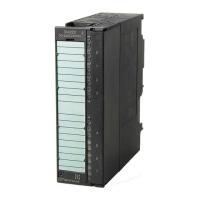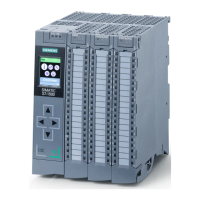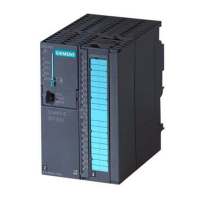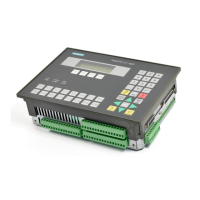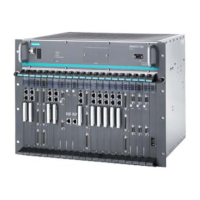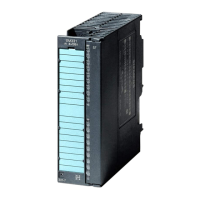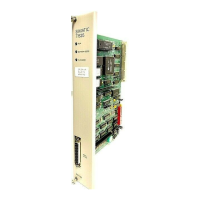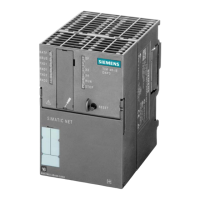Using I/O on the S7-400H
7-19
Automation System S7-400H Fault-tolerant Systems
A5E00068197-07
Additional marginal conditions for various modules
DI 16 x 24 V DC Alarm 6ES7 321-7BH01-0AB0
DI 16 x 24 V DC Alarm 6ES7 421-7BH00-0AB0
DI 16 x 24 V DC Alarm 6ES7 421-7BH01-0AB0
• These modules are equipped with a “wire break” diagnostic function. In order to
use this detection, you must ensure a cumulative quiescent current (= signal
status “0”) between 2.4 mA und 4.9 mA at one or two inputs.
To do so, switch a resistance by means of an encoder signal. The resistance
depends on the switch used and lies between 6800 and 8200 Ohm for contacts.
Formula for calculating the resistor for Beros:
(30V / (4.9mA – I_R_Bero) < R < (20V / (2.4mA – I_R_Bero)
DI 16 x UC24/60V 6ES7 421-7DH00-0AB0
• This circuitry does not support the “wire break” diagnostic function.
DI 16 x NAMUR 6ES7 321-7TH00-0AB0
• Equipotential bonding of the encoder circuit should always be referenced to one
point ( usually encoder minus).
• Operate both redundant modules on a common load voltage supply.
• When you select an encoder, always compare its properties with specified input
characteristics. Note that the function must be guaranteed both for one and for
two inputs. This is for NAMUR encoders, for example, a “0” signal current > 0.7
mA and a “1” signal current > 4.2mA.
DI 4 x NAMUR Ex 6ES7 321-7RD00-0AB0
• Please note the relevant maximum current and voltage specifications for the
operation of modules in Ex applications.
• You can use only the 2-wire NAMUR encoders or contact elements.
• Equipotential bonding of the encoder circuit should always be referenced to one
point (usually encoder minus).
• When you select an encoder, always compare its properties with specified input
characteristics. Note that the function must be guaranteed both for one and for
two inputs. This is for NAMUR encoders, for example, a lo signal current > 0.2
mA and a hi signal current > 4.2mA.
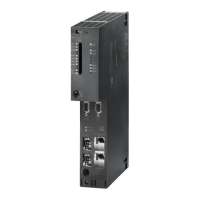
